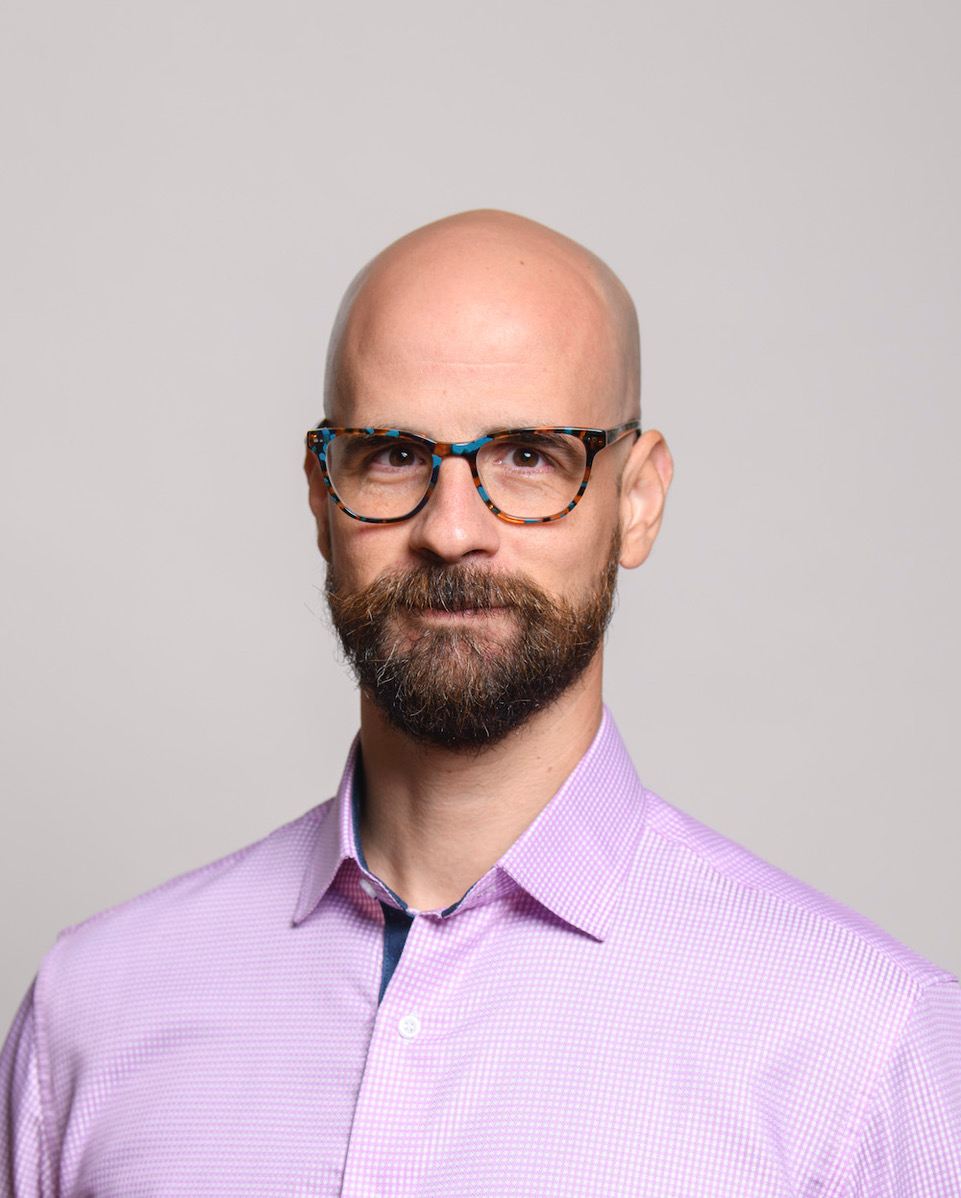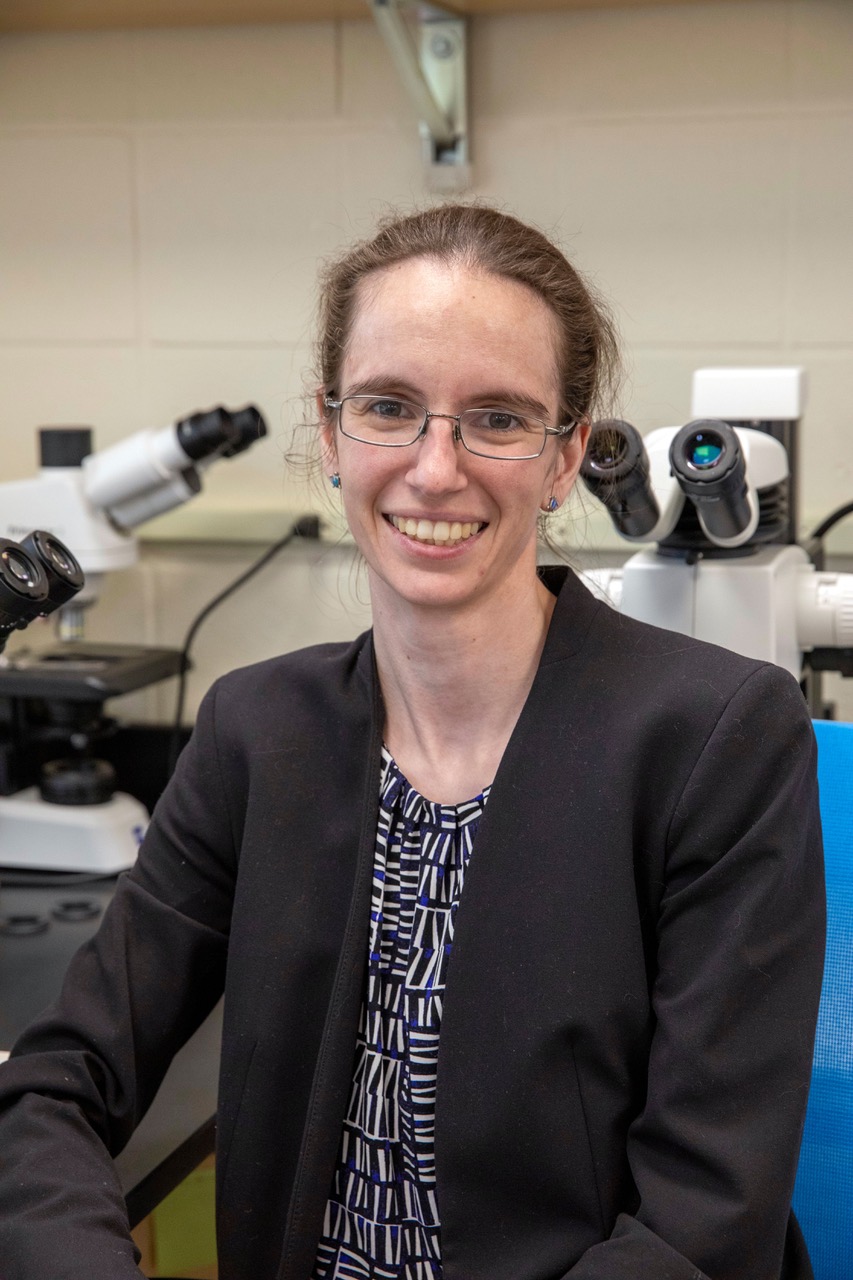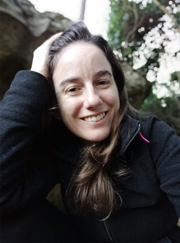Distinguished Lecturer/Educator ProgramThe Paleontological Society is excited to make its outstanding scientists available to colleges, universities, and public events for presentations on research, evolution, and the nature of science.We are proud to count with the generous and enthusiastic work of a diverse group of colleagues who do not recognize any kind of boundaries. Our shared passion and common language is Paleontology. As an International and inclusive Society, we promote Paleontology across all types of borders and for everyone. We work to create a more inclusive and broader paleontological network. Distinguished Lecturers make their visits available on an expenses-only basis; no honorarium is required. The Society will work with the local institution to partially, or sometimes fully, offset speaker’s travel to give lectures. Those institutions with available funding for visitors and willing to fully cover the Distinguished Lecturer visit are encouraged to do so; this allows to maximize the reach of the PS Funds that can be available to other participants. Please, explore the wide range of topics and diverse approaches offered by our PSD Lecturers. If you would like to invite any of our Distinguished Lecturers (below), please, download and fill in this PSDL-Request Form [download will begin]. Instructions for emailing the Request Form are included in the form. To view the current schedule, please click here. For any questions or additional information about the Distinguished Lecturer/Educator Program, please contact Sara Pruss, Paleontological Society Councilor. 2025-2026 Paleontological Society Distinguished Lecturer
Javier Ortega-Hernandez Javier is an invertebrate paleobiologist interested in the evolution of major animal groups during the Paleozoic, with particular emphasis on the Cambrian Explosion and the Great Ordovician Biodiversification Event. Originally from Mexico City, he obtained an undergraduate degree in Biology from the Universidad Nacional Autónoma de México, and in 2008 completed the MSc in Palaeobiology at the University of Bristol in the United Kingdom. He then moved to the University of Cambridge from 2009 to 2018, first as a PhD student at the Department of Earth Sciences, and then as a Research Fellow of Emmanuel College and the Department of Zoology. He has been part of the faculty at the Department of Organismic and Evolutionary Biology and curator at the Museum of Comparative Zoology at Harvard University since January 2019. His group specializes in specimen-based research, fieldwork in Western USA, and developing new approaches to study and better understand the early evolution animals and the marine biosphere as informed by exceptionally preserved fossils. Talk Titles: Wonderful Cambrian beasts and where to find them Breathing new life into early animals - three dimensional reconstructions of early Cambrian arthropods from China Cambrian treasures from the Wild West - exceptionally preserved marine biotas from the Cambrian of Western USA Nigel Hughes (Global Ambassador) Nigel Hughes is a professor at the University of California-Riverside and has been fortunate to work as a paleontologist in museums and universities in a number of countries. He applies information from fossils to a range of developmental/evolutionary issues as well as to geological problems related to tectonics and ancient continental configuration. Nigel is also active in geoscience educational outreach in regional languages in South and Southeast Asia and owes his career to interactions with avocational paleontologists. Talk titles Morphological variety in stratigraphic context: Approaching evolutionary tempo and mode in midcontinental late Cambrian trilobites Ups and downs in South and Southeast Asia: Trilobitic constraints on the construction of Asia and Himalayan orogeny Research into ancient fossils as a gateway to place-based geoscience educational outreach to underserved communities in South Asia
Elizabeth Sibert Elizabeth Sibert is an Assistant Scientist at Woods Hole Oceanographic Institution. Her research lies at the intersection of paleobiology and biological oceanography, and she has pioneered the use of microfossil ichthyoliths (fish teeth and shark scales) to explore how marine ecosystems, and in particular fish and sharks, have responded to past global change. Elizabeth also works to expand access to paleontology and oceanography research to people with disabilities. Talk Titles: Something fishy this way comes: investigating shark and fish evolution using microfossils in deep sea sediments Investigating the Missing Early Miocene (Mass?) Extinction Enigma Additional presentation (to be given along side one of the other presentations listed above) Disability and Accessibility in Paleontology
2023-2025 Paleontological Society Distinguished Lecturer
Johnny Waters Johnny Waters is Professor Emeritus and Research Professor at Appalachian State University. His research interests focus on Paleozoic echinoderm paleobiology, especially blastoids, and the causes of and rebound from mass extinctions, especially in the Devonian and Mississippian. He was very surprised when these two interests converged in the Central Asian Orogenic Belt. He has conducted international field work in 11 countries for 40 years with 19 trips (and counting) to the Gobi in China and Mongolia. Talks: Life and death in the Devonian - The view from the Central Asian Orogenic Belt The Devonian was a pivotal period of earth history. Fishes take over the oceans, plants form the first forests, and vertebrates colonize land. But the Devonian is also a time of climatic and ecological upheaval. Reefs, which dominate the greenhouse climate of the Lower and Middle Devonian, are decimated in the icehouse conditions in the Late Devonian. The oceans periodically turned anoxic, destroying tropical marine faunas. But marine faunas did recover in the actively volcanic islands of the Central Asian Orogenic Belt. Visualization of blastoid form and function Virtual Paleontology offers the promise of enhanced visualization of fossil organisms through 3D reconstruction and modelling. Using legacy acetate peels, state of the art synchrotron imaging and laser scanning, this talk will how one can reconstruct fossils. Using these virtual models, we can better understand their hydrodynamic properties and the functioning of vital systems such as feeding, respiration and reproduction. Although blastoids (echinoderms) are the model organism I used, the techniques are widely applicable. What I learned from 40 years of international fieldwork International fieldwork is at various times exhilarating with exciting discoveries or demoralizing with abject failure. With appropriate appreciation for all members of the expeditions, international fieldwork can be a very positive experience for all involved. After 40 years in the field from locales as diverse as the Gobi in Xinjiang Province, China, the Gobi Altai in Mongolia to 2000 ‘ below the coral reefs of Roatan in a DIY submarine, I have had just about everything go right and wrong. The talk will focus both on the scientific discoveries of the fieldwork as well as the stories of how we got there. 2020-2022 Paleontological Society Distinguished Lecturer
Claire is the curator of Karoo Palaeontology at the Iziko South African Museum whose current research focuses on palaeoenvironmental studies in the Late Ordovician (Cedarberg Formation) and late Permian (Cistecephalus Assemblage Zone). As a museum scientist, she actively collaborates on projects that aim to improve inclusivity of museums in the context of a developing nation. She is actively involved in training and education projects, but also works on exhibitions that enhance the museum visitor experience. The Boonstra Diorama Story: now told through digital preservation Museums in developing nations face unique challenges when replacing old exhibitions. When the iconic Boonstra Diorama exhibition opened in 1959, it was the first of its kind in South Africa to showcase the 270-million year old fossil discoveries of the Karoo in a relatable way to visitors. This space was more than just “edu-tainment”, it inspired a generation of scientists to uncover more fossils and added to the building blocks of knowledge. However, science moves on and space is needed to highlight recent discoveries that keep museum spaces relevant and accurate. Now, thanks to an ambitious collaborative digital preservation project, the dioramas are accessible to a wider audience online in a virtual space. A Tame Geologist For Every Palaeontologist – how the secrets of the Soom Shale are being uncovered using detailed sedimentology The Soom Shale Lagerstätte in South Africa is well known for its exceptionally well-preserved fossils. It hosts the only known examples of some taxa, extends the temporal ranges of others, and provides a unique glimpse of a post-glacial ecosystem, at a time when other Lagerstätten are unknown. Marine life on Earth flourished and diversified during the Great Ordovician Biodiversification Event, lasting for 25 million years from around 485-460 Ma - only to be cut down again during a mass extinction event in the Late-Ordovician. The Soom Shale was deposited in the aftermath of this mass extinction in a high-latitude cold water setting. But what about the rocks? Every good fossil-hunter knows the value of having a tame geologist around to read the rocks and add to the story. It turns out that the sedimentology of the Soom Shale is just as remarkable and unique as the fossils it entombs – hints of marine snow and other exquisitely preserved details in rocks are currently been studied that may change our idea of how life persists in harsh environments. The Soom Shale Lagerstätte – a unique window into the Late Ordovician The Ordovician Soom Member is a laminated shale unit at the base of the Cedarberg Formation, Table Mountain Group (South Africa). The unit was deposited just after the Hirnantian glaciation, at around 444 Ma, during which major climatic shifts lead to the second most devastating mass extinction event on Earth. It is of palaeontological importance not only because it contains an exceptionally well-preserved, yet largely undocumented faunal assemblage, but because it provides a unique glimpse of a post-glacial ecosystem in southwestern Gondwana. This talk will be a review of what is currently known about the Soom Lagerstätte.
2019-2021 Paleontological Society Distinguished Lecturer
Marc Laflamme
One of the most important assemblages of fossils from the Ediacaran is the ‘Ediacara biota’ – a group of soft-bodied organisms whose affinities are fiercely debated. This talk explores the geological and biological contexts in which the first animals evolved (and in which the Ediacara biota disappeared). I hope to review our current understanding of this biota and outline several outstanding questions that will help to illuminate the ecological and environmental step-changes that ushered in the Phanerozoic Eon.
Exceptional fossil deposits (‘lagerstatten’) have provided extraordinary glimpses of past life on Earth. However, the chemical, biological, and geological processes that govern the preservation of soft-tissues are still being unraveled. I discuss recent advances in understanding these taphonomic pathways, new techniques and explore some of the unexpected biases involved in exceptional preservation, and how these may be impacting our view of evolution and the fossil record.
This talk explores the benefits of engaging undergraduate students in team-based learning initiatives within a research-driven context. I demonstrate how the use of the Agile project management approach, combined with the use of active reflective practices and virtual project-management software, can help students develop vital research skills.
2019-2021 Paleontological Society Distinguished Lecturer
Noelia Carmona
Noelia is a professor at the Universidad Nacional de Río Negro, Patagonia, Argentina. She has a joint appointment as researcher with the Argentinian National Council of Science and Technology (CONICET). Her research is focused mostly on Cenozoic trace fossils from Patagonia, comparing these paleocommunities with those found in modern shallow marine environments. Most recently she also started exploring Mesozoic marine trace fossils from the Neuquén Basin in Argentina, in order to understand the impact of the establishment of the Modern Evolutionary Fauna and the associated large-scale restructuring of shallow-marine benthic communities. In addition, she is also interested on modern and ancient microbial mats in siliciclastic environments, and their paleoenvironmental and taphonomic implications. Noelia coordinates a science club at a local public library, where she teaches workshops on paleontology, biology and geology for kids. She is an active member of AWG, being the founder of the Patagonia Chapter. Noelia is a passionate advocate of women in Science and has coordinated a program for schools promoting STEM education and careers among girls.
2018-2020 Paleontological Society Distinguished Lecturer
Assistant Professor of Geology University of Cincinnati Department of Geology Cincinnati OH 45221
Yurena is a Quaternary paleoecologist and paleoenvironmentalist who has worked at the University of Cincinnati since 2013. Her research seeks to better understand how humans, biological communities and the environment interact with each other. These interactions are studied at various spatial (from local to global) and temporal (paleontological, archeological and historical to present) scales. The group of organisms she uses to examine biotic-environmental-human linkages is Mollusca (primarily gastropods), which are abundant, often well preserved in the fossil and archeological record, and highly sensitive to environmental and anthropogenic stressors. She integrates data, techniques and approaches from multiple scientific disciplines including ecology, taphonomy, paleoecology, isotope geochemistry, Quaternary geochronology, archeology and the emerging field of conservation paleobiology. Yurena has focused much of her career on studying fossil, archeological and modern land snail communities from oceanic islands and continental settings around the world, a group of organisms that are severally threatened by human impacts, and generally have received less publicity and lower scientific and conservation efforts than other major animal groups. Yurena is native from the Canary Islands, Spain and seeks to serve as a role model for other women, immigrants and minorities (particularly Hispanic women) in STEMP fields.
2017-2019 (on extension until 2021) Paleontological Society Distinguished Lecturer
Dr. Patricia H. Kelley
Dr. Kelley is a Centennial Fellow and a past president of the Paleontological Society. In 2014 she received the United States Outstanding Master’s Universities and Colleges Professor of the Year award, the nation’s highest honor given to faculty for teaching excellence. As a Distinguished Lecturer, Dr. Kelley seeks to bridge the divide between acknowledgment — even celebration — of the reality of evolution and beliefs maintained by the great religious traditions. She is eager to participate in workshops designed for teachers, public lectures and research seminars. Dr. Kelley’s scientific research focuses on the evolution and paleoecology of Cenozoic molluscs from the southeastern United States. She is especially interested in predator-prey interactions and their role in the evolution of strategies that are employed by snails to capture prey and by clams and snails to avoid predation. For more information visit her webpage.
2017-2019 Paleontological Society Distinguished Lecturer
Univ. of Washington Estella B. Leopold Associate Professor of Biology & Curator of Paleobotany Biology Department & Burke Museum of Natural History and Culture University of Washington Seattle WA 98195
Caroline is paleobotanist and paleoecologist who has worked at University of Washington, Seattle since 2008. Her research seeks broadly to understand the role that plants played in the deep-time assembly of our modern ecosystems. In particular, she has focused on elucidating the evolution of grass-dominated ecosystems, which currently occupy 40% of Earth’s land surface and provide key agricultural products (cereals, corn, and rice). By using a previously largely untapped fossil record of vegetation in the form of plant silica (phytoliths), Caroline has addressed questions regarding the origin and early diversification of the grass family (Poaceae), the Cenozoic spread of grass-dominated habitats, and the presumed co-evolution of grasses and horses and other large mammalian herbivores. Her research involves fieldwork in Cretaceous and Cenozoic deposits on several continents (e.g., North and South America, Eurasia). In addition, Caroline is working with colleagues on a uniquely preserved Late Cretaceous ashfall macroflora in central Wyoming. Collaborating with a modern ecologist, they are applying neo-ecological modeling approaches to understand the ecological niche(s) that flowering plants occupied in Late Cretaceous ecosystems prior to their rise to ecological dominance. Additional information about Caroline is available on her website.
2017-2019 (on extension until 2021) Paleontological Society Distinguished Lecturer
Thompson Chair of Invertebrate Paleontology Florida Museum of Natural History University of Florida 1659 Museum Road Gainesville, FL 32611
Michal Kowalewski is an invertebrate paleontologist interested in ecology, evolution and taphonomy of marine benthic communities. He integrates paleontological, geological, and ecological data to study past ecosystems over a wide range of spatial and temporal scales. His current projects span multiple continents, habitat types, and time-intervals, but his primary focus is on late Quaternary mollusks. He is particularly interested in using fossil data to assist in monitoring and restoration of marine habitats impacted by human activities. Michal’s didactic and mentoring activities center on guiding graduate students and post-doctoral researcher toward developing successful professional careers in academic and non-academic settings. He teaches workshops on quantitative methods in paleontology and summer field courses for graduate students. Over his career Michal served as a chair of the Paleontological Society Student Research Grants program, editor of Paleobiology, and chair of the organizing committee for the 2014 North American Paleontological Convention. Additional information about Michal is available on his website.
|














